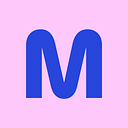Member-only story
The Power of Tactile Typography
As someone with limited sight, Braille allows me to feel the landscape of language
About six years ago, my world turned upside down as my sight receded into blurs and whorls of color and light. One thing that changed most was how I read.
As someone who loved books, I didn’t want to completely abandon the written word. Against the advice of a low-vision specialist, who told me Braille was too hard to learn, I threw myself into the world of tactile words with equal parts trepidation and determination.
The specialist was right. It was hard. Though it took me only two weeks to memorize the code, the dots under my fingers felt disconnected from the printed words I loved. It was as if I’d regressed to a toddler, struggling to link the lines and curves to familiar sounds. Over the years, as my fingers grew more sensitive and my mind more receptive, I finally demystified the raised dots. I finally felt the tactile landscape of Braille.
Very few think of Braille as a form of typography.
People think of Braille as many things. Some assume it’s a language. Others call it a writing and reading system for the blind. Many look at the confounding raised dots and wonder how anyone could make sense of them. Very few…

